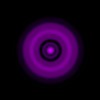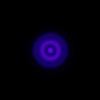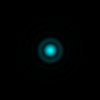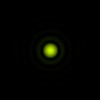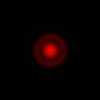Chromatism A quote I got during this project: “an accurate depiction of a color star test is a genuine can containing a plethora of worms” Why ? The main issues here at stake is “how do our eyes perceive color and what does happen to light at different colors when passing through a telescope. Telescope issues: The need for this type of simulation is mainly devoted to the refractor-world. These telescopes only use glass as the main optical elements. Glass breaks the light at different wavelengts in different manner and thus different errors are appearing at different wavelengths. The aberrator can generate these errors when the errors at wavelenghts are known but this often not the case. So I have turned to using optical design software, in particular MODAS (Ivan Krastev) and ATMOS (Massimo Riccardi), to simulate these wavefront errors (at different wavelengths). The images below show how a certain design would function at 405, 436, 489, 546 and 656nm. The most important are 489,546 and 656nm since these form part of the so-called C-F continuum. The wavefront errors mainly look like a mix of spherical aberrations also called spherochromatism. |
